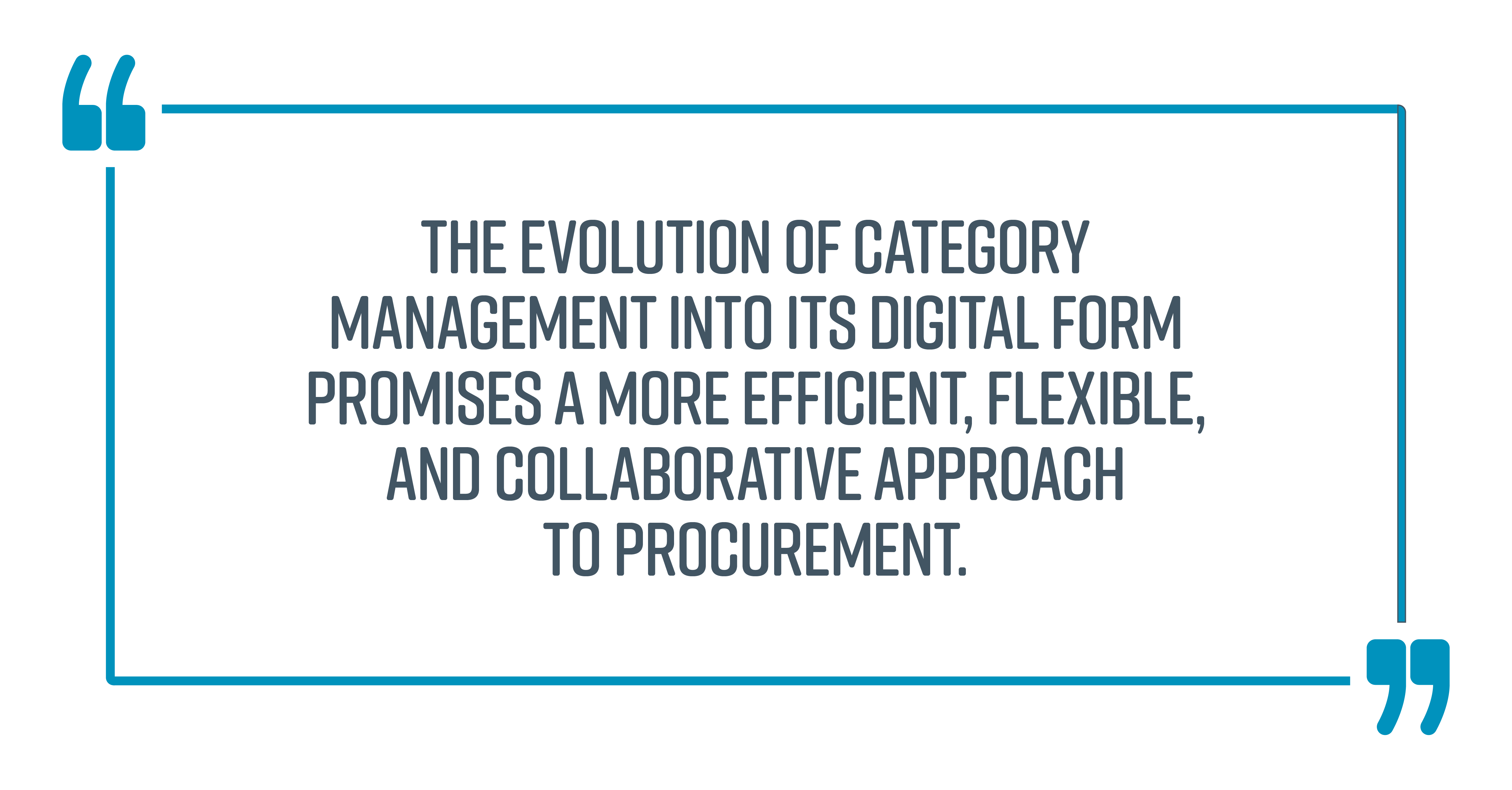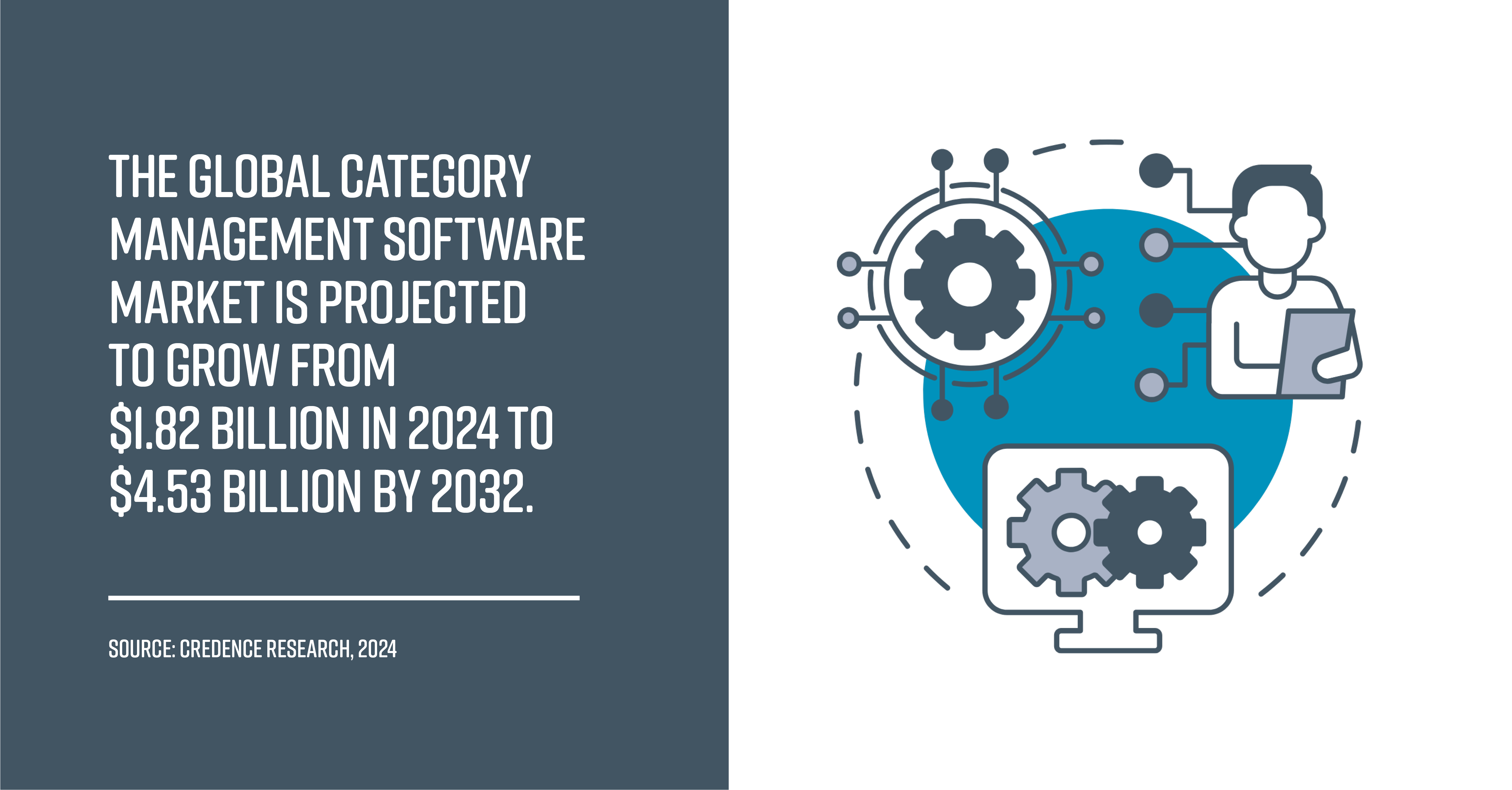By Jonathan O’Brien with Stéphane Morel
In the ever-evolving landscape of procurement and supply chain management, category management remains a cornerstone. However, as technology advances and digital solutions become more integrated, the approach to category management is also transforming. In our latest blog written by our CEO, Jonathan O’Brien, we invited Stéphane Morel, seasoned procurement expert and Director of Procurement Capabilities & Standards for Fresenius Medical Care, to share his thoughts on the future of category management and how digital category management strategies will reshape this critical function.
The Need for Evolution in Category Management
Category management, a strategic approach to procurement that segments spending into areas with similar products or services, is facing calls for evolution. But, despite the frequent declarations of its demise, category management is far from obsolete. Instead, it needs to evolve to keep pace with the changing dynamics of procurement and supplier relationships.
Due to the increasing strategic and operational contributions of suppliers in a VUCA environment, Stéphane believes that “we need more category management.” The call for evolution is not about discarding traditional methods but refining them to address modern challenges and opportunities.
The Shift Towards Digital Category Management
Digital category management is seen as a natural progression from traditional methods, leveraging technology to enhance efficiency, collaboration, and data-driven decision-making.
There are several key aspects of this digital transformation according to Stéphane:
- Selective Focus: A focused approach is necessary, where full category management is applied only to the most relevant categories. For other categories, a strong strategic sourcing process and contract lifecycle management would suffice.
- Outcome-Oriented Strategies: Moving away from the linear, step-by-step processes, he suggests creating a category strategy canvas. This approach starts with the desired outcomes and builds the strategy around them, making the process less rigid and more adaptable to changes.
- Integration of New Technologies: The adoption of digital tools and platforms can significantly enhance category management. These technologies provide frameworks for increased collaboration, integrated supplier and market intelligence, and AI-driven insights and recommendations that inform category strategies. Digital category management should make the process more flexible and responsive to internal and external changes.
- Connected Supplier and Market Intelligence: Digital solutions should enable organizations to connect their supplier and market intelligence seamlessly. This connectivity ensures that category strategies are based on the most up-to-date and relevant information. Access to comprehensive supplier and market data allows for better risk management, innovation, and strategic sourcing.
Addressing Current Challenges in Category Management
Stéphane continues that despite the many benefits, digital category management also presents several challenges that organizations must address to ensure successful implementation:
- Collaboration Barriers: Traditional category management often struggles with collaboration. Digital tools can facilitate better teamwork by enabling online workshops, validation points, and real-time comments.
- Data Quality and Integration: High quality data is the foundation of effective category management. “Garbage in, garbage out” – starting with poor data will inevitably lead to poor strategies and decisions. Organizations must invest in robust data systems and processes to ensure that the data used when creating category strategies is accurate and reliable. Advanced analytics and AI can help procurement teams generate meaningful insights from both internal and external data, providing a holistic view of the category landscape.
- Implementation and Approval: Digital platforms can streamline the revision and approval process to ensure smoother implementation of strategies.
- Knowledge Management: While PPT-based strategies stored in share drives is still a common inefficient practice, digital solutions dramatically drive consistency and ensure proper archiving.
The Role of People in Digital Category Management
While digital tools offer numerous advantages, we mustn’t neglect the human element. Effective category management requires a balance between technology and human expertise. Stéphane believes that “50% human, 50% machine is key, and the best results come from a synergy between the two.”
Digital tools can automate and accelerate many aspects of category management, but human judgement, creativity, and decision-making remain irreplaceable. The role of procurement professionals is to leverage these tools to enhance their capabilities, not to be replaced by them.
The Future of Category Management
The future of category management is digital, and those who embrace this evolution will be well-positioned to lead their organizations to success.
The evolution of category management into its digital form promises a more efficient, flexible, and collaborative approach to procurement. So, “long live category management”, says Stéphane, “but let it be a category management that is equipped for the digital age.”

10 Steps to Develop an Effective Digital Category Management Strategy
Listening to Stéphane share his thoughts on how we can get good aa building great category management strategies, it’s clear that in order to use the next generation of digital tools well, we need to think differently. With this in mind, I’ll leave you with my 10 steps to develop an effective digital category management strategy:
Step 1: Define Clear Objectives and Scope
Start with a clear understanding of what you want to achieve. This might be cost savings, improved supplier relationships, risk mitigation, sustainability or enhanced innovation. The objectives will guide the overall strategy and ensure alignment with broader business goals.
Step 2: Assess Current Capabilities
Evaluate your current category management capabilities, including processes, tools and data quality, and identify gaps and areas for improvement. This assessment will help you understand the baseline from which you are starting and the resources needed for digital transformation.
Step 3: Select Digital Tools and Technologies
Choose the right digital tools and technologies to support your strategy. Look for solutions that offer advanced analytics, AI-driven insights and collaboration features, then ensure that the tools you select are compatible with your existing systems and processes.
Step 4: Develop a Data Management Plan
A robust data management plan is essential for digital category management. Ensure that you have access to high-quality, relevant data and implement processes for data collection, storage, and analysis. Invest in tools that can integrate data from multiple sources and provide real-time insights.
Step 5: Focus on Key Categories
Identify which categories will benefit most from digital transformation and hold the potential to return the greatest benefits. Apply full category management processes to the most critical categories where they will have the most significant impact. For less critical categories, streamline processes to ensure efficiency without compromising effectiveness.
Step 6: Adopt a Breakthrough Way of Thinking
Start with the desired outcomes and then look for the breakthrough. This is crucial, as all too often we settle for incremental improvements in what has gone before. Instead, consider the fundamental need that is being fulfilled, and challenge whether it would be satisfied differently. This is only possible if you set out to find breakthrough, and could change the entire category and lead to an entirely different strategic way forward.
Step 7: Train and Engage Your Team
Training is crucial for the successful implementation of digital category management. Provide comprehensive training to your procurement team on the new tools and processes and engage them by communicating the benefits of digital transformation.

Step 8: Balance Technology and Human Expertise
While digital tools can automate many processes, human judgment and expertise are irreplaceable. Ensure that your team is trained to use these tools effectively and can interpret the insights they provide.
Step 9: Implement and Monitor
Implement your digital category management strategy and apply good change management principles. Consider deployment in phases, perhaps starting with pilot projects for high-priority categories. Monitor progress regularly, using Key Performance Indicators (KPIs) to measure success. Adjust your strategy as needed based on feedback and performance data.
Step 10: Foster Continuous Improvement
Digital category management is not a one-time project but an ongoing process. Foster a culture of continuous improvement and innovation by regularly reviewing and updating your strategy. Encourage your team to stay abreast of the latest trends and technologies in procurement and to continuously seek ways to enhance category management.
Written by Jonathan O’Brien, leading procurement expert and CEO of Positive Purchasing Ltd with guest contributions from Stéphane Morel.


